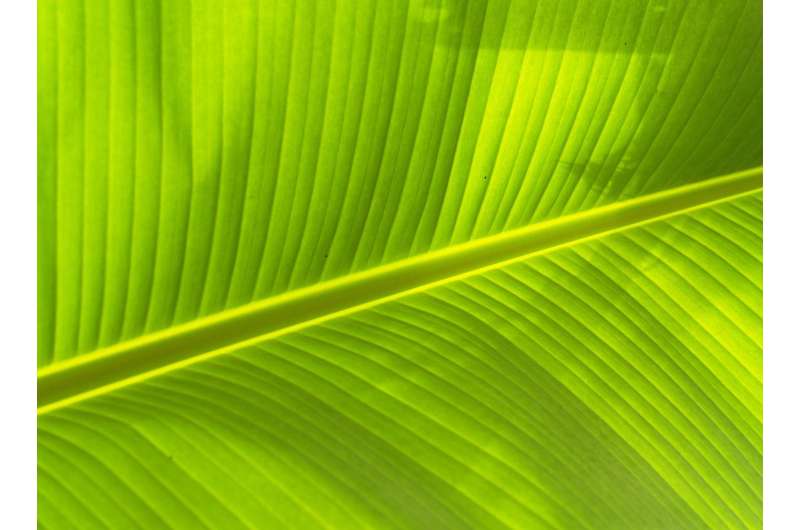As climate changes, plants might not suck carbon from the air fast enough

Current climate change models might be overestimating how much carbon dioxide plants can suck from the atmosphere.
Thanks to molecular research on photosynthesis done at the MSU-DOE Plant Research Laboratory (PRL), non-MSU atmospheric scientists have factored in a lesser understood photosynthetic limitation into their models.
The result: models suggest that atmospheric carbon dioxide concentrations might increase more rapidly than previously expected.
Photosynthesis supports life on Earth. Photosynthetic organisms capture carbon dioxide from the atmosphere and process it through a series of reactions known as the Calvin-Benson cycle.
Specifically, the carbon is used to make triose phosphate, a molecule which eventually turns into sucrose, the energy currency that powers plants and the food chain above them. The process is referred to as TPU (triose phosphate utilization).
But there is a limit to how much carbon plants can use.
"When photosynthesis gets too much carbon dioxide, it can't process it into sugars fast enough," says Tom Sharkey, University Distinguished Professor at the PRL. "Photosynthesis cannot indefinitely increase its productivity levels. It reaches a ceiling, and more carbon dioxide won't help. In fact, plants sometimes absorb less carbon dioxide as levels increase in the atmosphere."
"Some of our PRL labs have been studying the molecular bases of this TPU limitation," Tom adds. "The atmospheric scientists approached my lab to properly factor that limitation into their model. As a result, we saw a rapid rate of increase of carbon dioxide in the model."
For example, when the researchers assumed TPU limitation was doubled, further restricting photosynthesis, the models showed that 9 gigatons of carbon would remain in the atmosphere by 2100, instead of going into plants.
"The prognosis is more alarming than we previously thought. We need to better understand TPU limitation, because it is affected by many factors. So far, we know the limitation is worse at high light levels, when temperatures are colder, and at high carbon dioxide levels," Tom says.
"The takeaway is that plants' ability to help us control atmospheric carbon dioxide levels is weaker than we thought."
The study is published in the journal Environmental Research Letters.
More information: Danica L Lombardozzi et al. Triose phosphate limitation in photosynthesis models reduces leaf photosynthesis and global terrestrial carbon storage, Environmental Research Letters (2018). DOI: 10.1088/1748-9326/aacf68
Journal information: Environmental Research Letters
Provided by Michigan State University





















